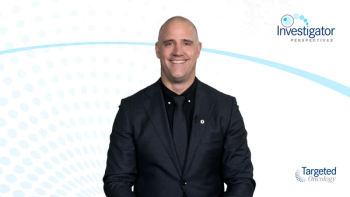
Emerging Treatment Practices in cGvHD Care
A panelist discusses how patients with advanced cGVHD often cycle through multiple approved agents over time due to plateauing responses, and describes upcoming clinical trials testing upfront use of these novel agents with corticosteroids in newly diagnosed patients to potentially improve outcomes.
Future Directions and Combination Strategies for Chronic GVHD
The four approved agents for chronic GVHD (ibrutinib, belumosidil, ruxolitinib, and axatilimab) work through distinct molecular pathways: BTK/ITK, ROC2, JAK/STAT, and monocyte/macrophage pathways, respectively. Most patients with advanced chronic GVHD achieve partial responses with these novel agents, often cycling between treatments as responses plateau or side effects emerge. Typically, patients may remain on one therapy for a year or more before transitioning to another option due to response limitations, tolerability issues, or new manifestations of the disease.
Current clinical trials are investigating the frontline use of these novel agents rather than waiting until steroid failure. The ROCK AND ROLL phase 3 study has recently completed enrollment, evaluating corticosteroids plus belumosidil versus corticosteroids with placebo in newly diagnosed moderate to severe chronic GVHD patients. Previous trials of upfront combination therapy (GRAVITAS with itacitinib and INTEGRATE with ibrutinib) did not demonstrate superiority over corticosteroids alone, but the ROCK AND ROLL study uses new endpoints like event-free survival that may reveal benefits not previously captured.
Additional ongoing investigations include a phase 2 study randomizing newly diagnosed chronic GVHD patients to standard corticosteroids versus two steroid-free arms (ruxolitinib alone or ruxolitinib with axatilimab), and another phase 3 study evaluating exitilumab alone or with steroids in newly diagnosed patients. These trials aim to determine whether earlier intervention with these targeted therapies can improve outcomes and potentially reduce steroid dependence, providing valuable insights into optimizing treatment sequencing for better management of this challenging post-transplant complication.








































